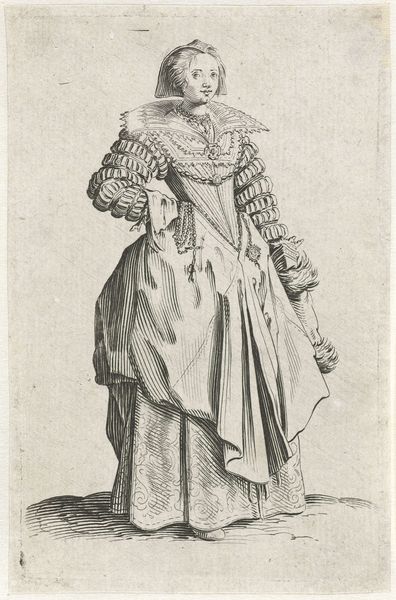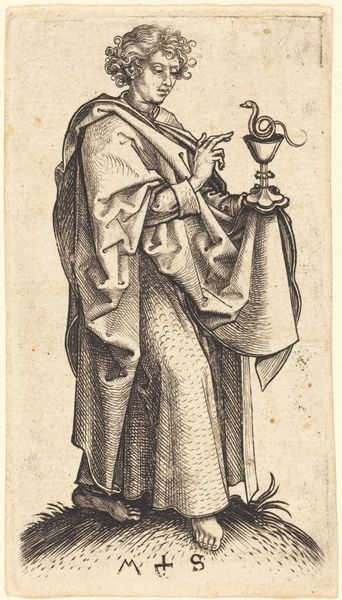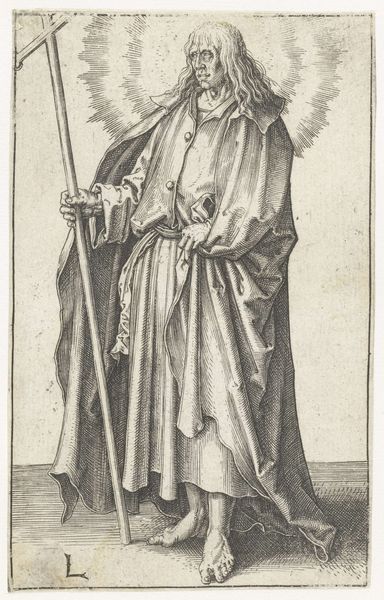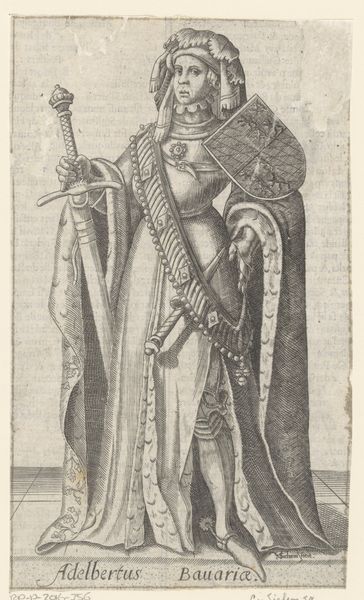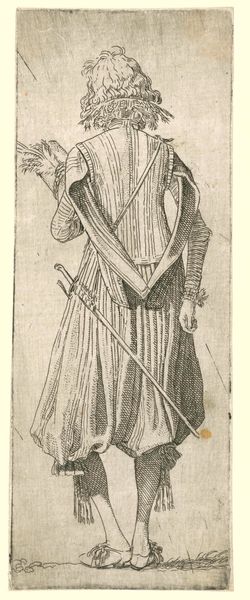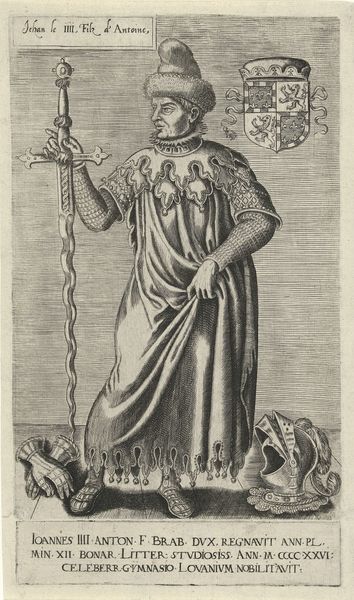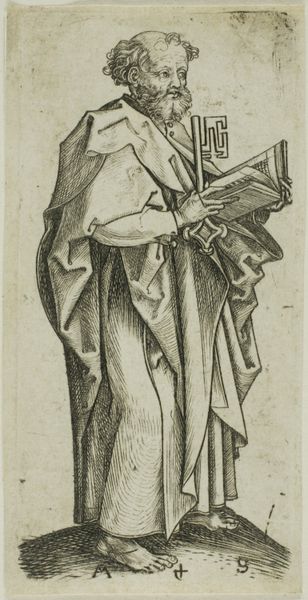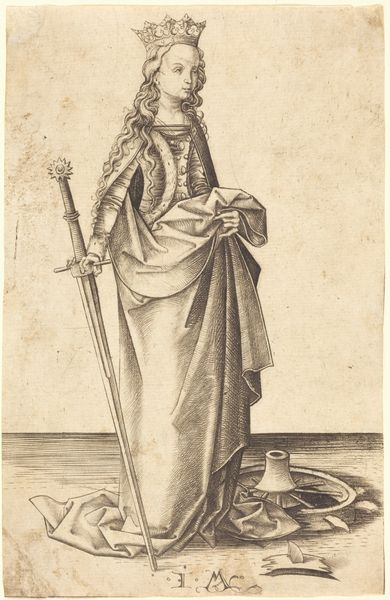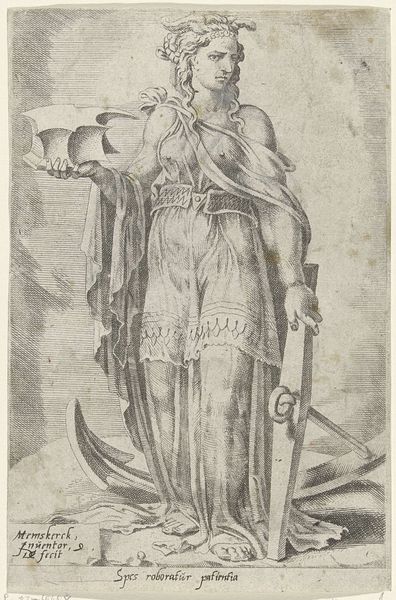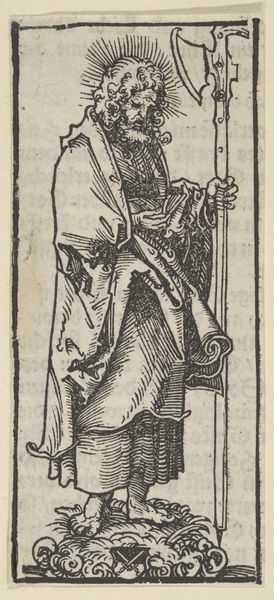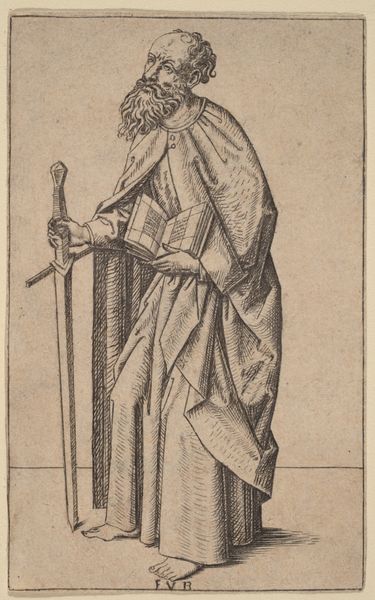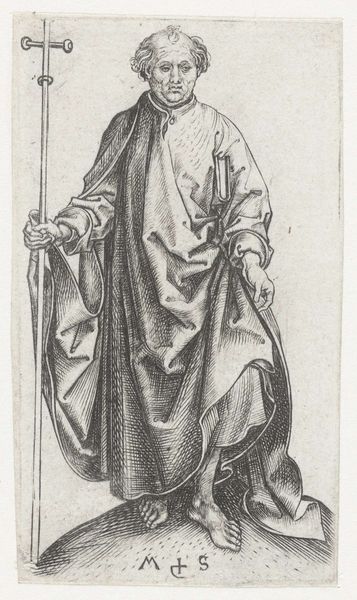
print, engraving
#
portrait
# print
#
old engraving style
#
mannerism
#
engraving
Dimensions: height 282 mm, width 185 mm, height 34 mm, width 182 mm
Copyright: Rijks Museum: Open Domain
Editor: So, here we have "Portret van Filips van Saint-Pol" by Frans Huys, an engraving from sometime between 1546 and 1562. It strikes me as a very formal, almost severe depiction. What do you see in this piece beyond the obvious portraiture? Curator: Beyond the man himself, I see a carefully constructed image intended to project power and legitimacy. Consider the engraving itself – prints like these served a crucial function in disseminating images of rulers. Before photography, how else could you control someone's image at scale? This print normalizes Phillip as a leader for a wide audience. Editor: That makes sense. It’s almost like early PR. The way he's holding the scepter and the prominent display of his coat of arms certainly seem intended to project authority. Is the choice of engraving itself a political statement? Curator: Absolutely. Engravings were reproducible, affordable compared to painting, and portable. They were actively used to sway public opinion, legitimize claims to power, and visually link the ruler to traditions of governance. Even the level of detail contributes; engravings could capture textures and fine details, suggesting precision and, therefore, perhaps reliability. What kind of message do you think it was portraying about lineage and succession? Editor: It shows his clothing and weapons very conspicuously, maybe to make him look strong and reliable to viewers and encourage public perception of him? Curator: Exactly. In conclusion, It gives an incredible perspective to learn that the arts could serve a key function to reinforce the socio-political hierarchy of the 16th Century. Thank you! Editor: Thank you, that really makes me appreciate the artistry and context surrounding this image even more.
Comments
No comments
Be the first to comment and join the conversation on the ultimate creative platform.
